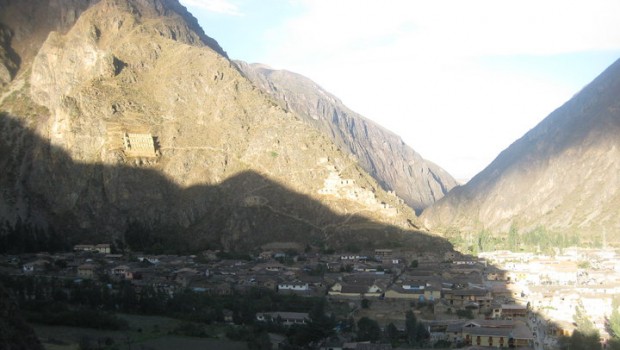The Best of Mexican Films in 2013
Julio César Durán
Throughout 2013, Mexican films, even though irregular in their releases, proved to have regained some health. This year, the number of Mexican productions has grown significantly, and more importantly, the quality of the films produced throughout both commercial studios and art houses has risen in an interesting way. Due to either constant rise in viewers from Spanish-speaking countries and higher visibility in the international film festivals, Mexican film has been enjoying an excellent cycle; and thus I propose 10 films that have been the best and most noteworthy pieces I have seen this past year.
With this I intend to list the boldest proposals that were able to combine the arts of cinematography with significant content. Nevertheless, the criteria is surely subjective. Some of them had their commercial release in Mexico during 2013 and others could only be seen in international and local film festivals.
10. Vuelve a la vida (Back to Life, Carlos Hagerman, 2011)
The title of this film originally comes from a popular dish made with a mixture of fruit de mer and many, many spices. The dish perfectly represents the tone and content of this film: a group of colorful characters and a real story that is hard to believe, all in an idyllic and exotic place. Based on a serie
s of interviews, Hagerman takes us through the story of “Perro Largo”, a kitsch hero that touches and transforms everyone around him. The setting for this amusing and emotive documentary is Acapulco, showing us how the truth can be even more extraordinary than fiction.

9. Ex aequo. Heli (Amat Escalante, 2013)/Despertar el polvo (Awakening Dust, Hari Sama, 2013).
Two films share a place as both have an air of tragedy in an argument divided in two parts: sin and punishment, and brutally explicit redemption. Heli, winner at the Festival de Cannes, is a contemplative piece with a poetic tone contrasted by high levels of graphic violence relating to Mexico’s drug war. Similarly, Awakening Dust is contemplative just as it, is violent, but this violence, shown in the slums of Mexico, is spiritual; a tramp leaves his daily routine and enters into a suburban hell. Escalante and Sama are shooting very close to the style of Pasolini’s sordid world in an almost documentary style, where rural and urban environments that touch the deepest fibers of the audience.

8. El mar muerto (The Dead Sea, Ignacio Ortiz, 2010)
This film, shot in 2010, has only now made its commercial premiere in Mexican theaters in the wake of its participation at the 7th Dubai International Film Festival. Ignacio Ortiz creates a dense universe during a strange evening encounter between a boxer, two prostitutes, a priest and a young waitress. The dramatic strength of The Dead Sea’s protagonists are supported by Mexico City’s Historic Center (downtown), as the place becomes, at least for a few hours, a lawless land. This location plays a part in creating a series of conflicts in the characters’ minds, edging the boxer towards a quest for his own “Paradise Lost” in the fashion of an ancient myth.
7. Cuates de Australia (Drought, Everardo González, 2012)
Amid a controversy with big theater chains (due to censure), this movie enjoyed a very brief commercial distribution. The film’s main character is Cuates de Australia, a communal land in northeastern Mexico. This distant place is a vivid representation of surviving in a world accustomed to ignoring a population that lacks resources. The documentary has an ethnographic style, but most importantly, it has an aesthetical pleasing way of talking about the drought in this forgotten land. Everardo González shows us amazing pictures of a desert landscape transformed into provocative scenery in his most recent movie.
6. Un mundo secreto (A Secret World, Gabriel Mariño, 2012)
The Gabriel Mariño’s debut deserves a place here for several reasons, inter alia, because it is a great example of contemporary cinema made by young people; an unpretentious cinema full of strength. A Secret World refreshes the road movie genre with Maria’s trip, a girl that travels through Mexico and, while doing so, also travels through her mind and body. The young girl takes this tour to explain and understand herself and eventually she purifies herself through it. Uncommon and simple, but with daring frames and out of focus moments, added to perfect colour palette pay attention to this bold film.
 5. Club Sandwich (Fernando Eimbcke, 2013)
5. Club Sandwich (Fernando Eimbcke, 2013)
Adolescence is a period to discover, understand and to know one’s self as well as others’ limitations. It is a phase full of mistakes, of stumbling and falling, yet also full of successes. In this clever comedy (full of the sobriety that characterizes the Eimbcke films) a young mother suffers because of the aging of her little boy, who is gently vanishing and turning into a grown man. A family conflict (detonated by the breakup of an “Oedipal” relationship during a vacation in an almost empty hotel) would have been a large enough topic for a cinematographic essay, yet this film does not take itself too seriously. What you are getting with this film a great value in a country where the independent film industry control is sometimes too rigid. What we are shown in this work is an accessible and stylized cinema.
4. Las lágrimas (The Tears, Pablo Delgado Sánchez, 2012)
The debut film of Pablo Delgado (graduate of the Centro de Capacitación Cinematográfica) is one of the most honest and endearing films we could see in Mexico in 2013. The story about two brothers (escaping from their disintegrating families to camp out in the forest) will be the proof of how “auteur” and entertainment films can merge so extraordinarily and successfully become a family movie. Mixing the best of contemplative styles with audiovisual exercises in an unscripted manner, The Tears moves us showing Mexican cinema’s arteries are mainly pumped full of young blood.
3. El premio (The Prize, Paula Markovitch, 2012)
This Mexican-Argentinian co-production depicts the life of Ceci, a little girl who is hiding with her mother Silvia from government forces in an old cabin on the beach. In the midst of the chaos, mother and daughter flee the city during Argentina’s Dirty War in the 70s. Markovitch compromises his political beliefs with a minimal anecdote. The audience will find a series of powerful sequences and a hostile atmosphere. However, innocence (from an expressive seven year-old actress) will rise over authoritarianism and fear in this beautiful film.
2. La jaula de oro (The Golden Dream, Diego Quemada-Diez, 2013)
One of the most awarded films of 2013 is without a doubt among the strongest and most important movies of the Mexican cinematic universe. The Golden Dream, a powerful survey about the particular universe of Central American migrants —whose final destination is the American dream (or rather, the American nightmare)— is the complex labor undertaken by Spanish filmmaker Quemada-Diez. The film boasts actor direction so well that it is overwhelming as it is combined with a genuine concern for the loss of humanity in a world filled with political walls, both physical or emotional. This film uncovers the thin line dividing aesthetics from politics.
1. La vida sin memoria parece dulce… (Life Without Memory Seems Sweet…, Iván Ávila Dueñas, 2013)
Three ordinary accounts bound together by a sacred engine: the cinematic camera. All stories become extraordinary through the editing work of one of the most interesting Mexican filmmakers of the last decade, Iván Ávila, who succeeds in creating both narrative cinema and an audiovisual essay on the basis of the found footage genre. Being reminded of Chris Marker’s work, we gaze upon an avant-garde film that explores three characters stemming from Zacatecas beginning with a cosmic event: a solar eclipse. Life Without Memory Seems Sweet… is an amazing film that explores memory and how we codify our daily life through it.
Posted: February 27, 2014 at 6:20 pm

















